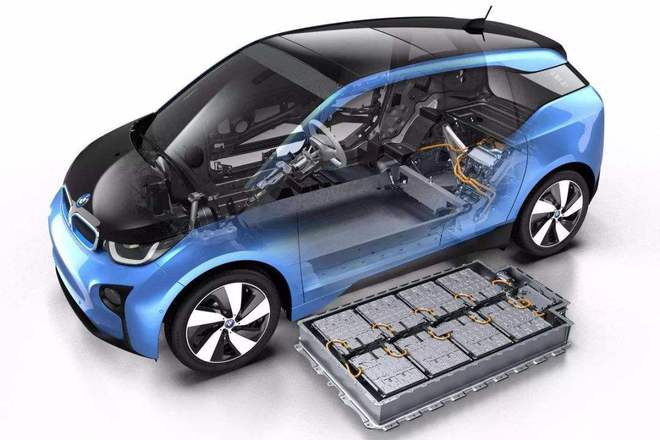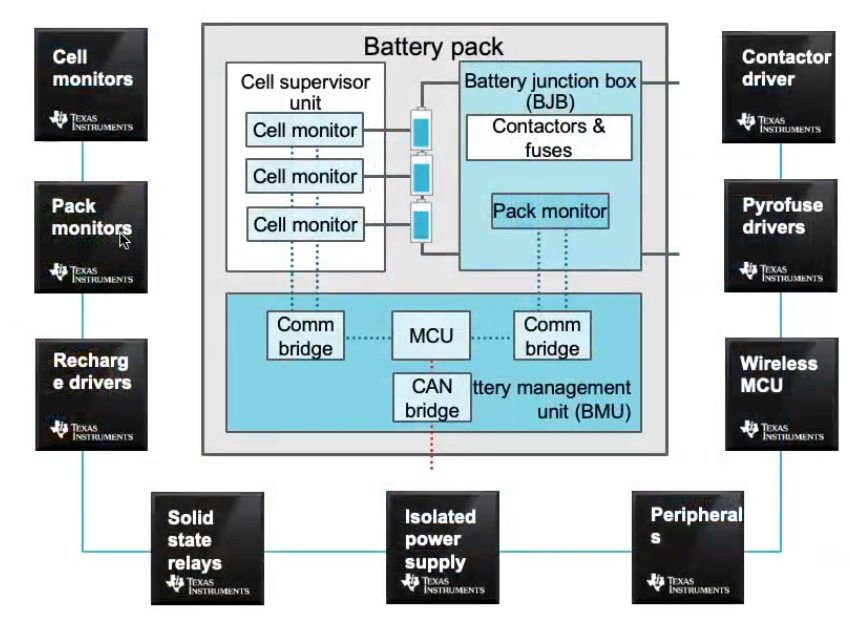
The rapid development of electric vehicles has spurred innovation in many key parts of the power delivery system, including on-board chargers (OBCs) and on-board chargers for charging batteries, inverters for driving electric motors, battery technology, and battery management systems (BMS). The BMS forms the basic building block for ensuring optimal and safe battery performance.
Key factors to increase the adoption of electric vehicles
While electric vehicles make up a significant portion of new car sales, they still make up only a small fraction of the global total. Increasing customer confidence in converting existing gasoline-powered vehicles to electric vehicles requires addressing a number of challenges, including:
● Range: While current battery and charging technologies are generally adequate for urban driving, longer range is an important step towards wider adoption. This is a multifaceted issue, including improving the efficiency and power of power conversion and control systems, improving high-capacity battery technology and monitoring, and many other aspects.
● Electric vehicle charging: Fast charging at higher voltages can reduce charging times closer to standard gasoline refueling times, while improved OBC topologies, batteries, and battery charging/monitoring can all play an important role.
● Cost: The total cost of the system can be balanced between the two factors above, but the mass production of wide-band gap semiconductors, cheap batteries that can be recycled, and the creation of automotive qualified equipment and topologies that can be flexibly used for different sizes and ranges of electric vehicles and battery chemistry can reduce manufacturing costs. In addition, reducing the size, weight, and volume of system components and wiring can play an important role in improving system efficiency and thus reducing costs.
● Safety: Improved reliability, thermal management and electrical safety are critical. Traction inverters need to perform well over the expected life of EV's greater than 1e11 switching cycles. Lithium-based battery technology requires a BMS with thermoelectric monitoring and shutdown technology to respond quickly in case of failure. The Automotive Safety Integrity Level D (ASIL-D) standard in ISO 26262 provides the highest classification of functional safety required by many automotive systems and components.
BMS trends
Figure 1 depicts a basic block diagram of a BMS that could be used in an EV.

Figure 1: Simplified BMS block diagram showing some of the system components (Source: Texas Instruments)
The battery cells are typically series-connected to form modules. Modules can then be daisy-chained to generate the voltage and current needed. Each cell in the module needs to be monitored for its key parameters, such as voltage and current by a cell supervisor unit (CSU). The battery junction box (BJB) provides essential power distribution and safety functions, as well as some top-level measurements. The CSU and BJB communicate with the microcontroller (MCU) through communication bridges, and these together constitute the battery management unit (BMU).
Some trends seen within these different systems are:
● Improved cell-monitoring accuracy to enable the broad adoption of the more cost-effective lithium iron phosphate (LFP) battery chemistry
● Intelligent BJB architecture, which supports local measurements and multiple pack monitoring, thus making communications with the BMU more efficient or even wireless
● Switchable options to support a range of voltage options, such as 400 V and 800 V, and potentially 1,500 V of energy storage systems like solar inverters
Let’s take a look at three products from TI that can be used in the CSU and BJB units.
BQ79718-Q1 battery-cell monitor
The BQB79718-Q1 is an AEC-Q100–qualified device that is functional-safety-compliant, with hardware capability up to ASIL-D targets. Some of the key features of this device include:
● Dedicated state-of-the-art analog-to-digital converters (ADCs) for each of up to 18 cells
● High accuracy of ±1 mV in these ADC measurements
● Cell voltage and battery pack current measurements synchronized to 64 µs
● Redundant ADC for extreme conditions with 10-mV accuracy
The accuracy of the cell measurements directly impacts the EV driving range, as shown in Figure 2. For an LFP pack, which has a flatter voltage discharge profile, the difference between 10-mV accuracy versus 1-mV accuracy can translate to an increased range of 63 miles for a 300-mile battery pack.

Figure 2: Accuracy of cell measurements in the BMS affecting EV driving range (Source: Texas Instruments)
The redundancy in the cell measurements enables higher confidence in measurements, as the main and redundant paths can be measured and compared for residual errors. Hence, a less conservative system design can be used.
The synchronization of the voltage and current measurements also leads to less error in the determination of the state of health of the battery pack.
The DRV3946-Q1 contactor driver
The contactors in the BJB provide the essential function of connecting the battery power to either the inverters driving the electric motor during drive conditions or the OBC during charging. A block diagram of the BJB is shown in Figure 3. The DRV3946-Q1 is a solenoid driver. This device can drive two solenoids from a low-resistance power stage with configurable peak and hold currents using an SPI interface. The ability to lower the current at hold enables efficiency improvements. The integrated quick discharge circuit prevents contact welding. The built-in self-test includes on- and off-state diagnostics and thus increases system robustness.

Figure 3: BJB basic block diagram (Source: Texas Instruments)
The DRV3901-Q1 Hot fuse drive
The battery disconnect under fault conditions is an essential safety feature in an EV. Two common approaches are to either use a melting fuse, which is triggered based on thermal conditions of an overcurrent, or a Hot fuse drive fuse, which is driven by an electronic driver. Hot fuse drive fuses offer higher reliability and faster deployment and are widely used in airbag squib systems. The drive for these can often have discrete solutions. As shown in Figure 4, the highly integrated DRV3901-Q1 Hot fuse drive driver achieves a fast response time by using a direct two-pin hardware interface that can be directly interfaced with an external UIR (voltage, current, resistance) sensor, thus bypassing the SPI interface and removing the need for MCU intervention.

Figure 4: Pin functions of the DRV3901-Q1 pyro-fuse driver (Source: Texas Instruments)
The firing sequence can be configured via the SPI interface to suit the profile of different fuses. The integrated charge pump provides minimal output voltage drop. When the battery's main power supply is not available, backup power can be provided by external storage capacitors. DRV3901-Q1 Monitors the discharge current of the capacitor to ensure the normal operation of the capacitor. Prevention of fire is important in these devices, which is ensured by cyclic redundancy checks in the SPI interface, direct hardware-triggered redundancy pins, and separate protected high/low side drives.
Improvements in BMS, along with the parallel development of power conversion and battery modules, will enable electric vehicles to travel further on a single charge. Customer confidence can be enhanced by improving safety and reliability, while cost reduction through increased efficiency will ensure wider EV adoption.
About US
Heisener Electronic is a famous international One Stop Purchasing Service Provider of Electronic Components. Based on the concept of Customer-orientation and Innovation, a good process control system, professional management team, advanced inventory management technology, we can provide one-stop electronic component supporting services that Heisener is the preferred partner for all the enterprises and research institutions.
